We’d all like to think that Spring arrives with a clock change, and in recent years a blast of fine weather in March can kick-start the season providing welcome relief from long winters. But at what cost?
Certainly the past two years have given us an early bounty; a sneak-preview with early sightings of key Spring species. These false starts can prove to be detrimental for many insects, not least the butterflies who have a very short flight period. A return to morning frost can kill most, if not all early emergences.
This Spring we have been rudely brought back to earth with many seasonal species running two or three weeks late – longer in some instances. Pearl-bordered Fritillaries have by now usually given way to the Small Pearl-bordered, but the former have yet to reach their prime. A wander around their habitat will give you a clue. The lack of feeder plants, and indeed the lack of most seasonal flora confirms that Spring has yet to fully arrive.
It’s over a month since I found my first Large Reds, and it seemed like an age before I found a little diversity.
First call on Saturday was Badminston, where despite the cooling clouds and stiff breeze, I managed to find good populations of Azure and Common Blue Damselflies sharing shelter among the gorse with the inevitable Large Reds.
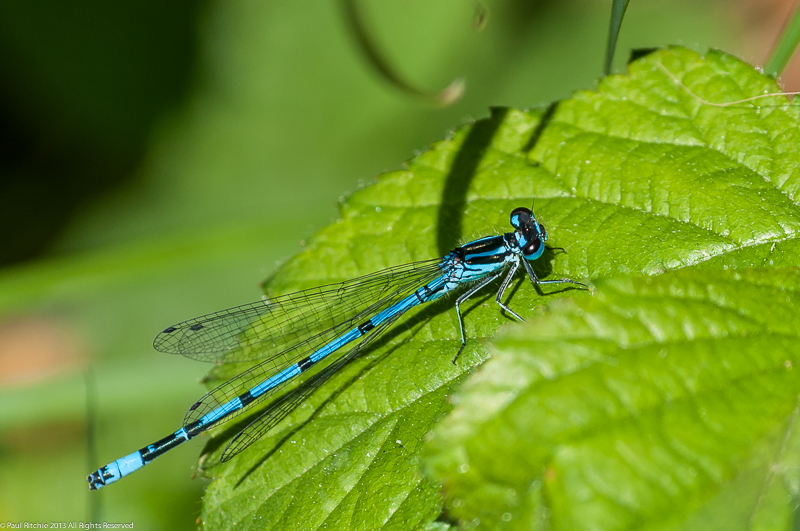
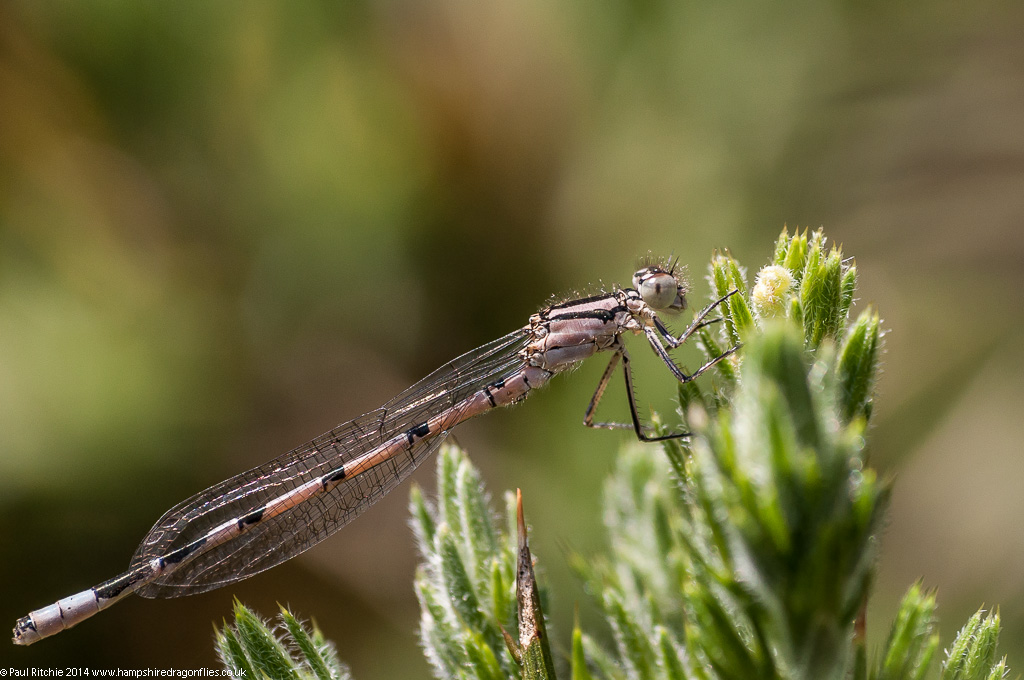
Occasionally these flighty little damsels would offer a decent opportunity.

I had hoped for a Hairy, having found one here last year,but it wasn’t to be today. I did however find a fresh Four-spotted Chaser
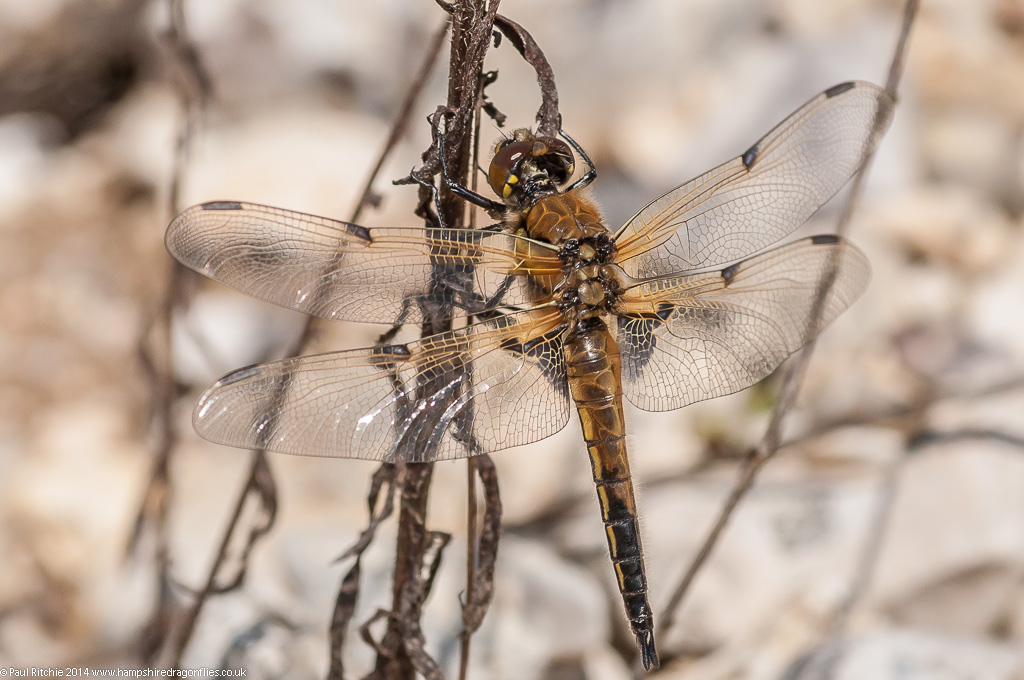
Back in May 2009 my favourite pond was alive with swarms of Chasers and Damsels, providing the very spectacle which turned me on to dragonflies in the first place. Yesterday was the first time this season I’ve witnessed any action over water, with a few male Broad-bodied and Four-spotted first in the queue for any passing females.
It was a welcome sight to see. Even the satellite pond close to the road had a couple of male BBC’s battling it out. As I arrived at the main pond a Four-spotted patrolled the eastern shore pausing frequently to perch in the gorse bush.
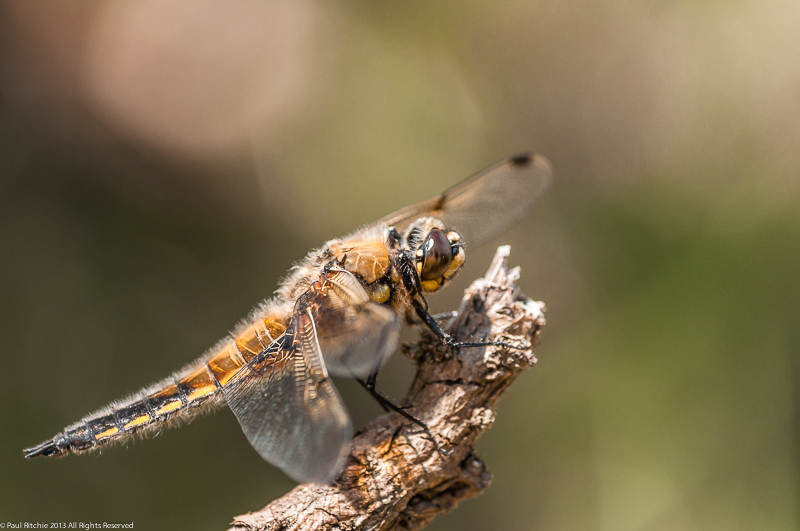
While I was busy grabbing this shot, Paul W arrived and we searched the gorse for more willing subjects. A few paces a male BBC was resting.
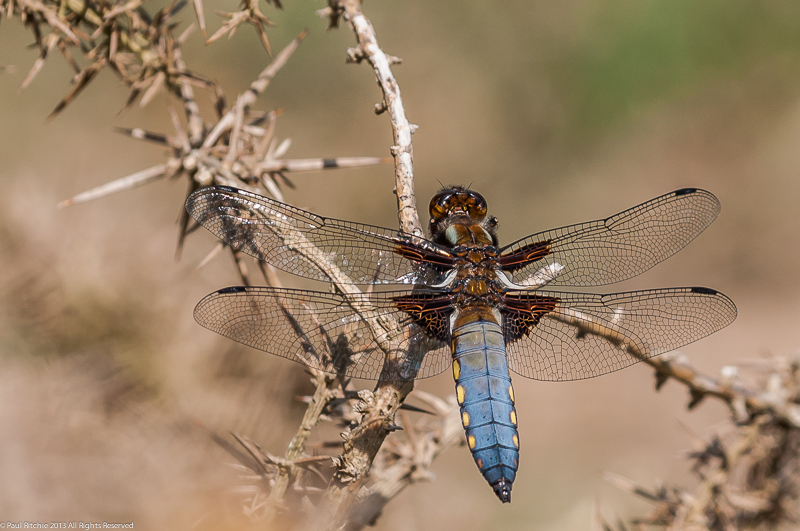
A fresh female Broad-bodied Chaser offered my favourite opportunity of the day, perched as she was on a gorse flower.
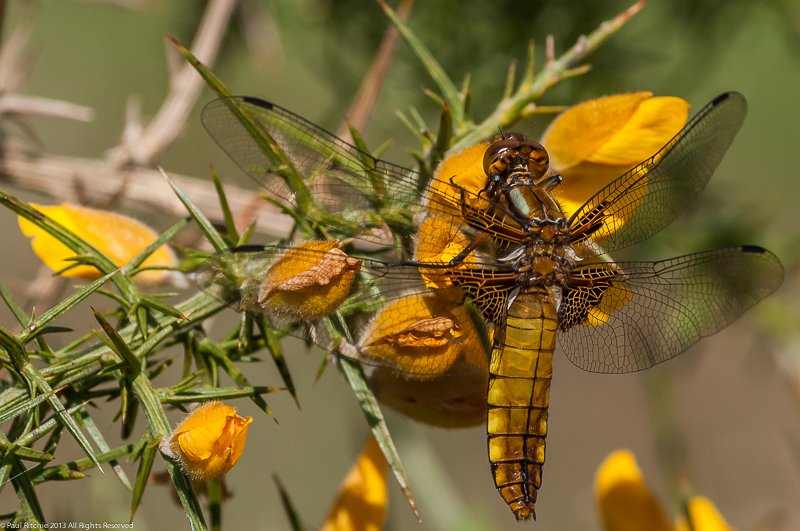
The gorse thicket threw up several more, including this stunning young male.

A pleasing day then, and a promise of more to come.
On Sunday I met my good friend Doug for our first outing of the season. We spent most of the afternoon investigating some new ponds, the majority located on private land. The first was behind a fruit farm and was a typical fishing pond – a good indication that dragonflies would be scarce! A few Large Red, Common Blue and Azure were our reward.
More of the same at a nearby small, wooded pond which quite frankly could do with some sympathetic management. A little work and it could reap benefits.
Next on the schedule was another ‘hidden’ woodland pond used for duck shoots! If we hadn’t had access to a location app we probably wouldn’t have found it. This one showed promise; certainly ideal Downy territory. More of the same damselflies decorated the grass along one bank and then Doug spotted a teneral Downy rise and disappear over the trees. Further along this steep bank I saw another – this one more mature. Neither gave us a photo opportunity, although we are talking Downys!
A result then, as far as sightings go, but I was getting restless for some action. Back over the Avon to Ramsdown, where at least the small pond produced some parading Four-spotted Chasers.
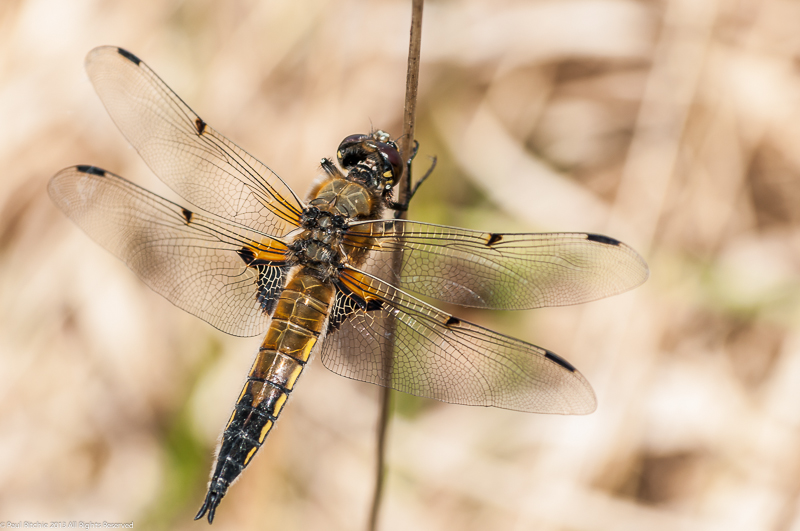
A trip to Ramsdown should always include a visit to Troublefield, and I’m pleased to say it has dried out considerably – although wellies are still essential. The southern meadow was alive with butterflies and reasonable numbers of Beautiful Demoiselles, although the latter proved very flighty.
So far, so good – just as a wet meadow should be. Eager to check out the northern meadow, our hopes were soon shattered by the sight of those dreaded cattle! Once again they’ve introduced them into the meadow too early, which means the death knell for the wild flowers and the invertebrates who thrive in these environments.
That’s three years in a row now. Are you listening Dorset Wildlife Trust? It is one of your reserves which you are so proud to advertise. E-mails have been sent, complaints have been made and non-committal replies have been received. Do you really care about the ‘nature’ in your reserves, or are you more interested in the funds provided by renting out prime water meadow as cattle feed? I already know the real answer. It’s up to you DWT to convince me (and your members) otherwise…
On a more positive note, I managed to add two new species to my count this season.
